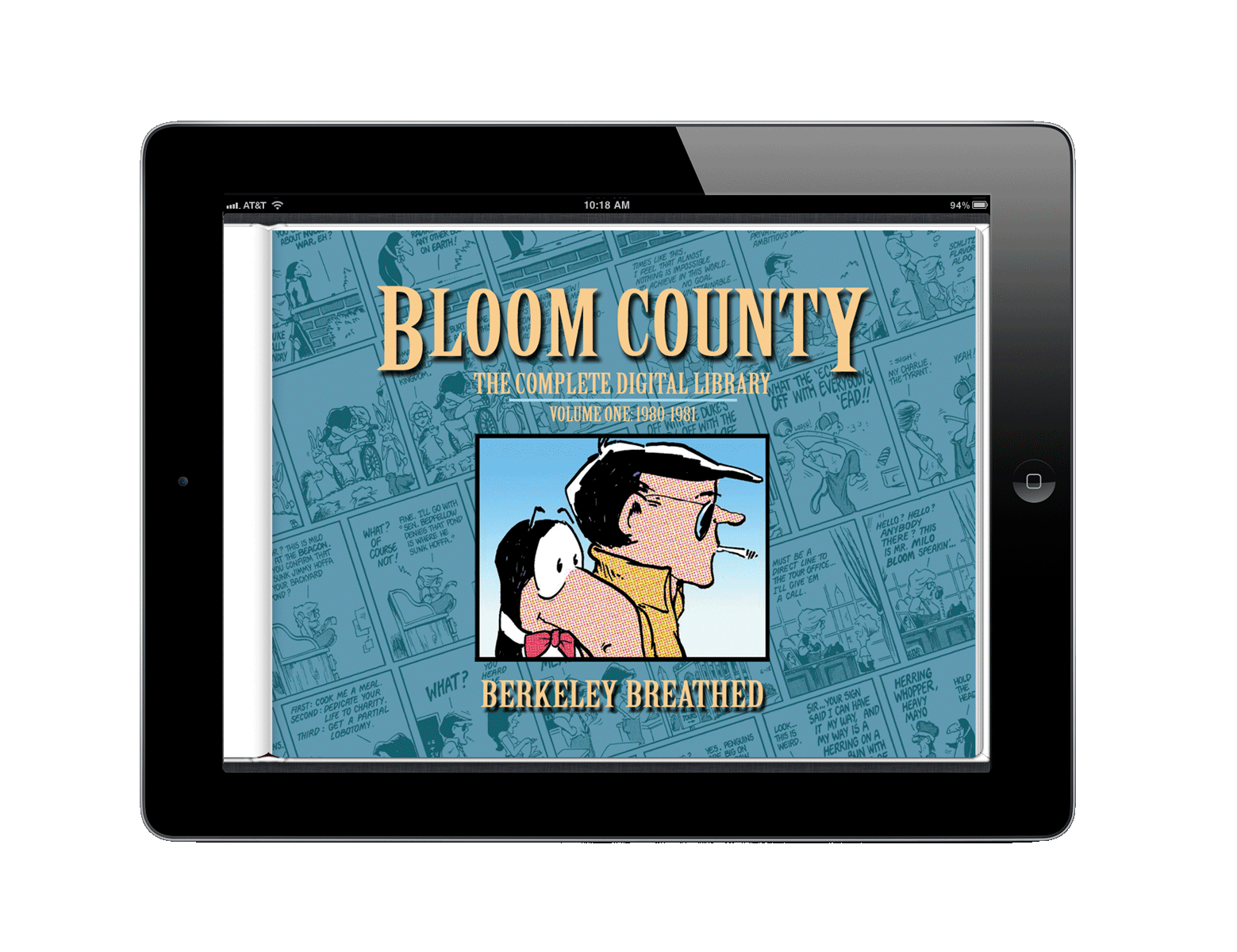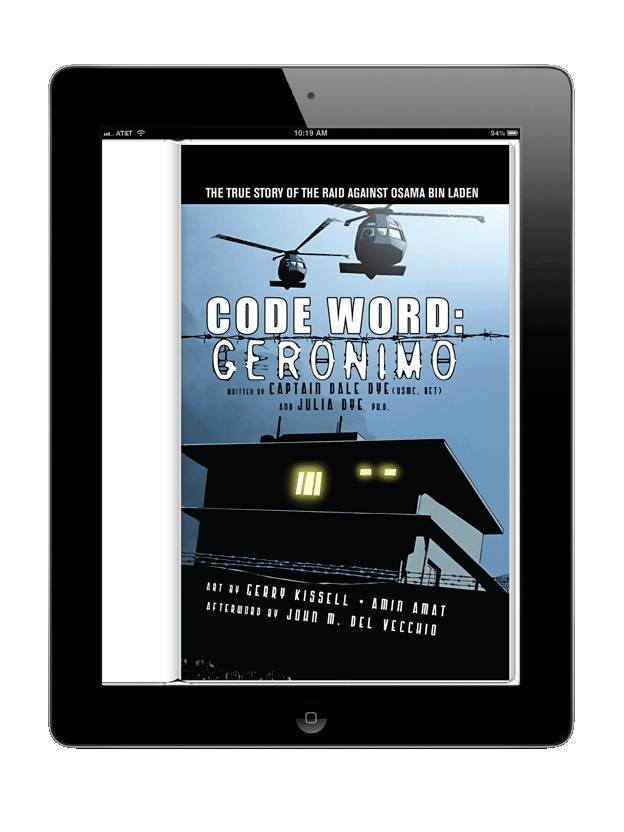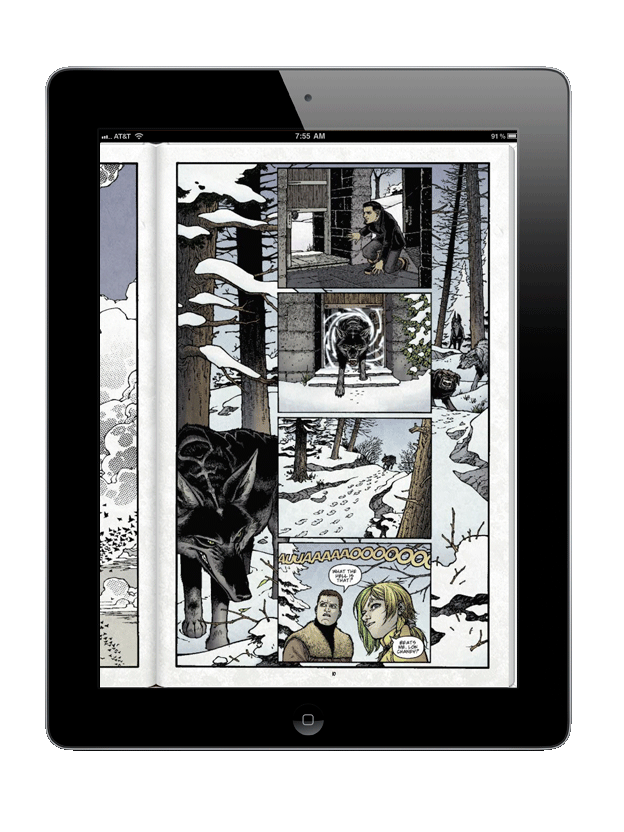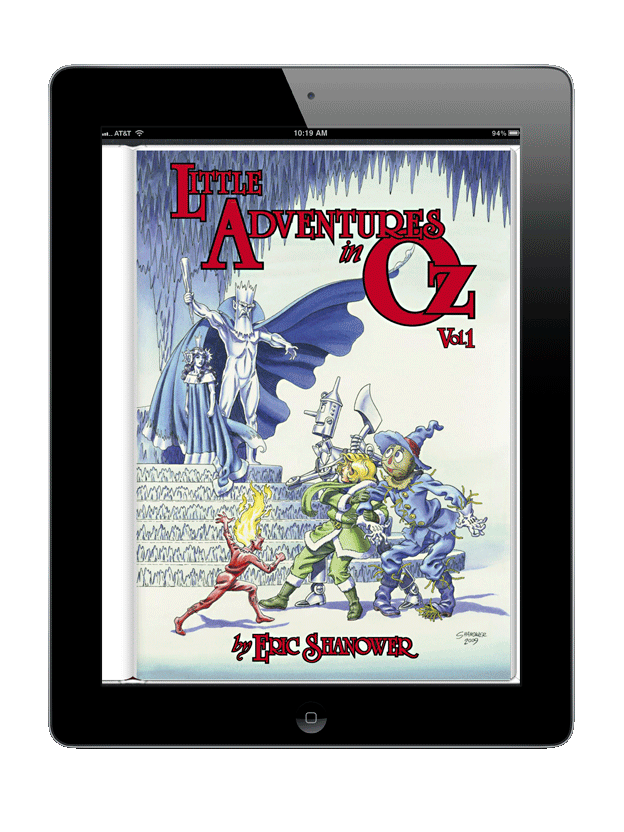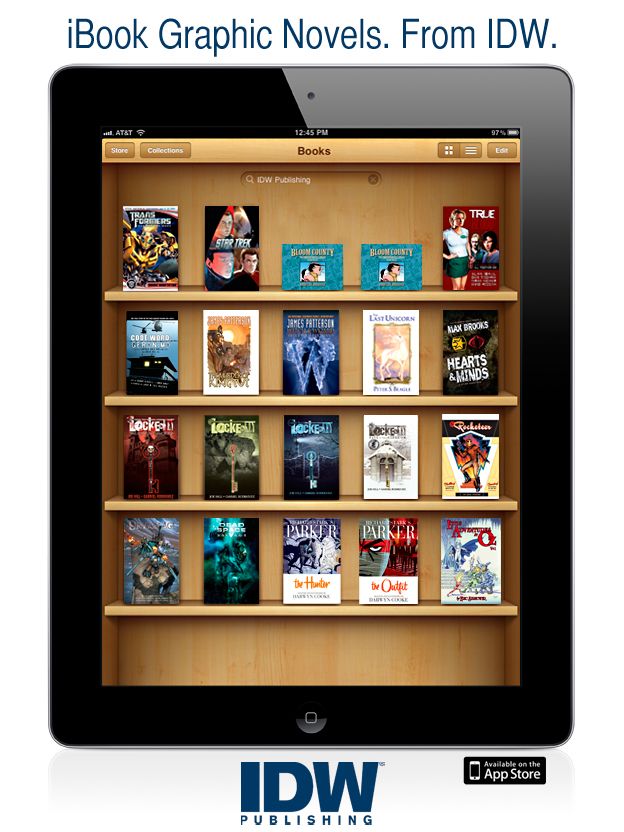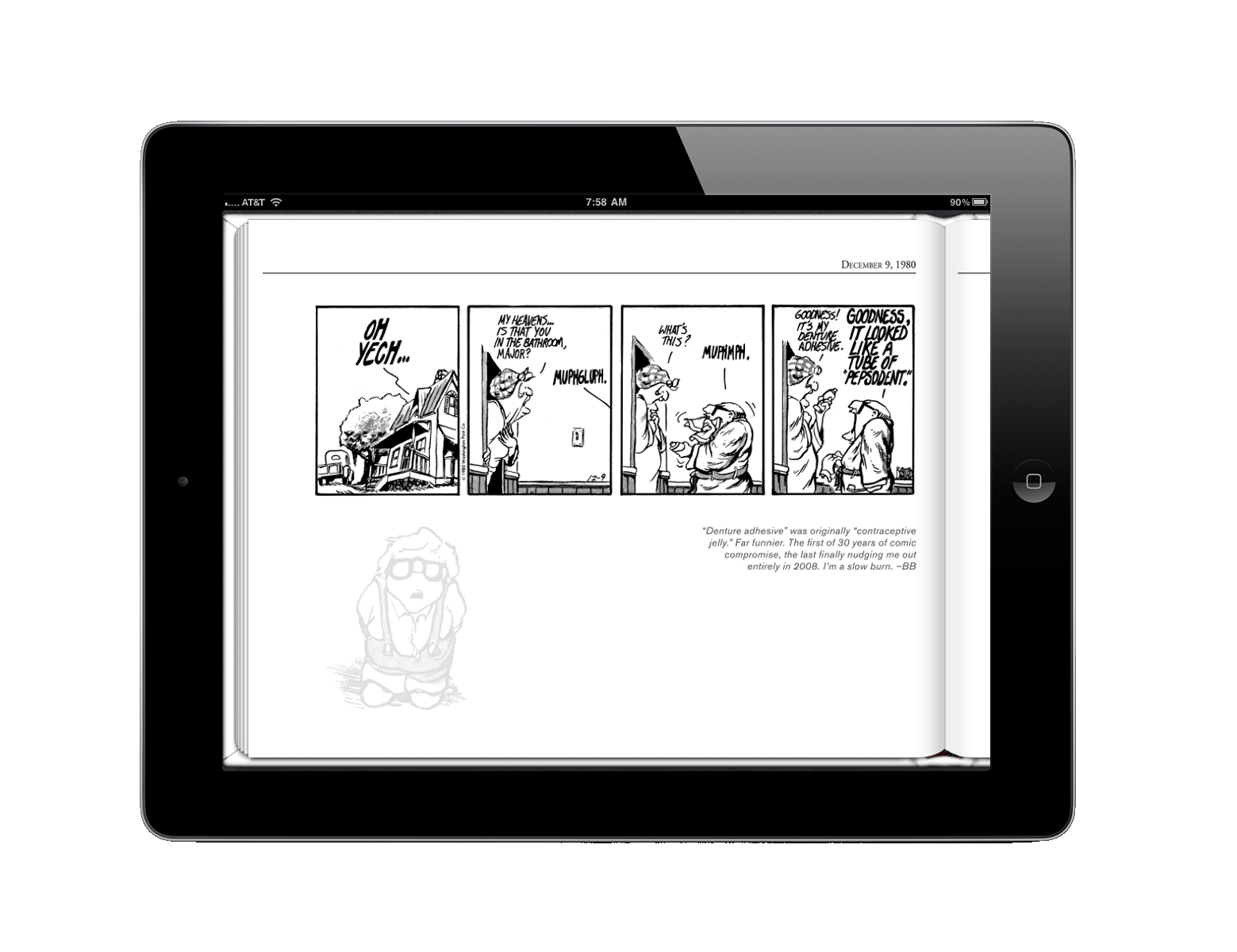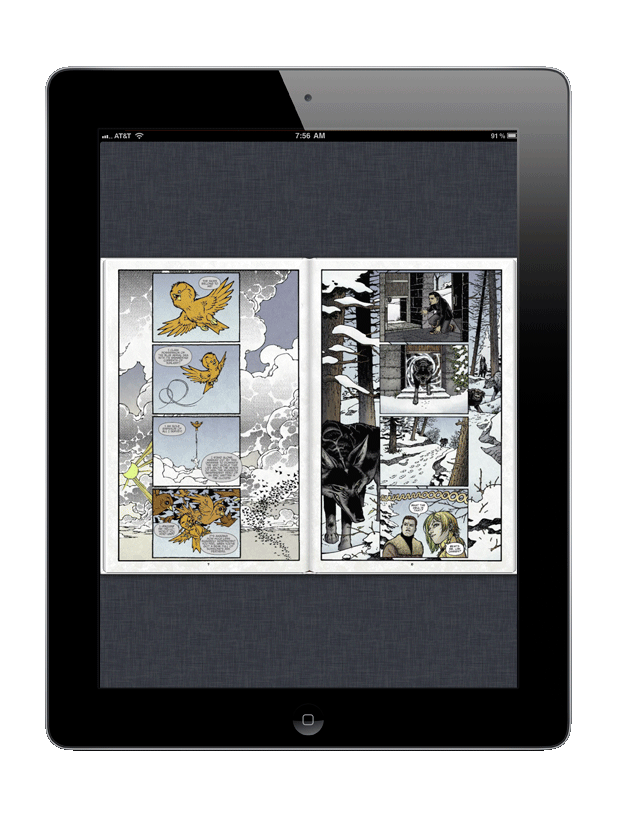IDW Publishing launched 19 graphic novels in the iBook Store this week, hoping to bring new readers to the medium by placing their graphic novels in the same space as related prose books. Jeff Webber, director of ePublishing for IDW, told Macworld that the comics apps were successful in bringing the comics to established comics readers, but that people who don't regularly read comics are less likely to encounter them; putting the books in the iBooks Store will ensure that Anne Rice, readers, for instance, will find IDW's graphic adaptations of her work in the same search as her prose novels. Incidentally, the launch included Code Word: Geronimo, IDW's graphic novel about the capture and killing of Osama Bin Laden, which was released simultaneously in digital and print.
I fired off an e-mail to Webber with some questions, and here's what he had to say:
Robot 6: IDW has been pretty aggressive in the digital field—you were among the first to market comics as single apps, back in the day. Why did you wait so long to go the iBooks route—and why does it make sense to do so now?
Jeff Webber: The epub format is entirely different from app development. It's much more rigid and allows for little specialized navigation. IDW has released epub-formatted books before, we have over 200 single-issue books in the Amazon Kindle store. Those are panel-by-panel books, because the same file has to work on a Kindle or inside Kindle apps on other devices. It works fine but isn't as perfect as using an app. The reason for the big push now is that Apple recently introduced new epub formatting tricks specific to iBooks. That has led to the great looking full-page approach we've developed.
Robot 6: From the reader's point of view, how does the iBooks version of your graphic novels differ from the single-book apps you sell in the iTunes store or the comics you sell through your iOS app?
Jeff: IDW's books are all full double-page spreads in the iBook format. Then readers can tap and zoom in for crisp, full page reading, and simply flip to the next page. It's very intuitive. We also include all the extra material in the trades and graphic novels.
Robot 6: Do the iOS platforms sync with one another? If I bought Parker: The Hunter through the iTunes store, could I add it to my iBooks bookshelf?
Jeff: Yes, all books purchased in iBooks line up on the shelves within that app.
Robot 6: The predominant model with apps like the IDW app is single-issue comics, and I see that you have put single-issue comics on the Kindle as well. Why go for longer books in the iBooks store?
Jeff: Presently IDW is focused on distributing longer-form graphic novels and collections. We may experiment with single issues eventually. The existing Kindle books are singles, we will go for longer-form going forward. This is a great format for bringing in new readers—complete stories similar to graphic novels and trades in mass-market book retailers. Casual readers may not desire to learn how to navigate and purchase using a comic storefront app, they just want to cut straight to the story.
Robot 6: What sort of technical challenges did this present?
Jeff: Lorelei Bunjes, our director of digital services, led up an in-house effort on this. There are unique challenges to epub development, especially in overcoming the technical hurdles to make the format look great. We also had great interest and feedback from the Apple iBook team.
Robot 6: With iBooks, are you specifically reaching out to general readers who aren't averse to graphic novels, as opposed to people who define themselves as comics readers? And does that mean you will focus on graphic novel adaptations (i.e. Anne Rice, James Patterson, The Wizard of Oz)?
Jeff: That's a perfect description of our efforts here. Big name creators or award winning titles can still be hard to find inside comic storefront apps. Now someone can search for Joe Hill, Max Brooks or Orson Scott Card and find their graphic novels right next to their prose work.
Robot 6: What about licensed properties that aren't necessarily literary, such as Star Trek and Transformers?
Jeff: We'll offer the entire range of our brands in iBooks. The variety also includes Eric Shanower's Oz series and Bloom County Library.
Robot 6: Why did you decide to do a same-day print and digital release of Code Word: Geronimo? Any idea what the response has been so far?
Jeff: Code Word: Geronimo is very much a mass-audience title that's getting lots of publicity this week, so we wanted it out in print and digital—including Kindle and apps—on the same day as print. Since these all just went live Tuesday, it's too early for us to have real sales data.
Robot 6: I notice your books are no longer in Digital's eManga store. What happened
with that channel?
Jeff: I believe Digital Manga is re-working some of their categories, so that's a temporary issue.
Robot 6: How big a slice of your revenues does digital represent at the moment, and
what is the trend?
Jeff: We're well ahead of 100% growth over last year and digital is approximately 3-5% of our total. And all of that is measured against an overall growing business.
Robot 6: How does digital fit into your marketing strategy—does it complement or
supplant print channels?
Jeff: It's very complimentary. IDW's line has lots of mass-market appeal. For IDW, digital is a great way to expose our brands to new audiences. IDW's print and digital sales are growing at a very rapid rate. So obviously digital has not taken away from our print sales.
Robot 6: Since IDW is in a number of channels—iTunes store, iOS app, Kindle, Nook, and now iBooks, you have some grounds for comparison. It seems like you are catering to a specific set of preferences: Longer stories rather than single issues, download rather than streaming. Does this reflect what readers are buying, or the way you would prefer to market your books?
Jeff: Single, downloadable, digital issues are our best sellers at this time. The iBook audience is typically used to reading longer form material such as novels, and expects a complete story.

